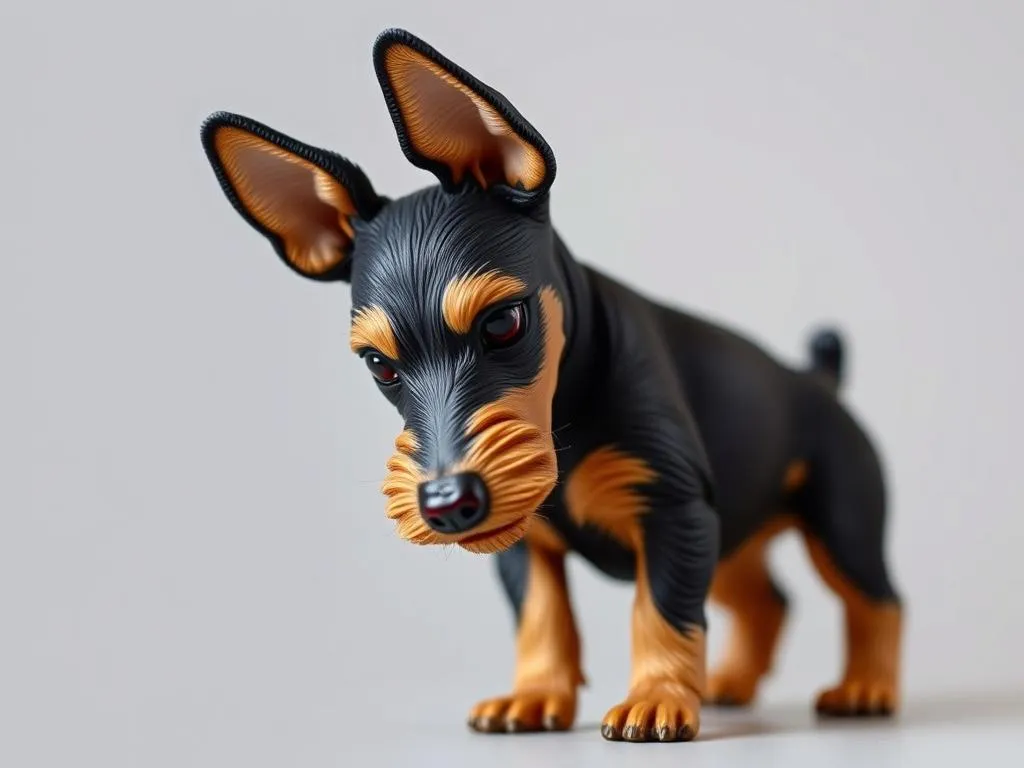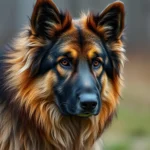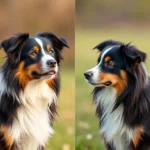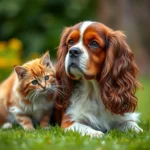
Understanding dog breeds can significantly enhance the experience of pet ownership. Among the myriad of breeds available, the Russian Toy Terrier stands out as a captivating choice for dog enthusiasts. This breed not only boasts a unique history but also displays distinctive physical and behavioral traits that make it an excellent companion for various lifestyles.
History of the Russian Toy Terrier
Origins
The Russian Toy Terrier traces its roots back to Russia, where it was developed in the early 20th century. This breed emerged from a desire to create a small, elegant companion dog that could thrive in urban settings. The influence of the English Toy Terrier played a critical role in shaping the breed, contributing to its size and temperament. As the breed evolved, it became beloved among Russian aristocrats, often seen as a symbol of status and refinement.
Recognition
The journey of the Russian Toy Terrier towards formal recognition began in the 1950s when it was acknowledged by the Russian kennel club. Over the years, as the breed’s popularity spread beyond Russia, international recognition followed. Today, the Russian Toy Terrier is recognized by several major kennel clubs, including the Fédération Cynologique Internationale (FCI) and the American Kennel Club (AKC), although the latter recognizes it within the toy group only as a miscellaneous breed.
Physical Characteristics
Size and Weight
The Russian Toy Terrier is one of the smallest dog breeds, typically weighing between 3 to 6.5 pounds (1.4 to 3 kg) and standing about 8 to 11 inches (20 to 28 cm) at the shoulder. Its petite size makes it an ideal companion for those living in apartments or smaller homes. Compared to other toy breeds, such as the Chihuahua or Pomeranian, the Russian Toy Terrier maintains a leaner and more refined appearance.
Coat and Color Variations
This breed comes in two primary coat types: smooth and long-haired.
- Smooth Coat: The smooth coat is short, glossy, and requires minimal grooming.
- Long-Haired: The long-haired variety features soft, flowing fur that may require more frequent grooming to prevent tangles.
Color variations for the Russian Toy Terrier include black, chocolate, fawn, and a mix of these colors with tan markings. The combination of its coat type and color can significantly affect the dog’s visual appeal and the grooming needs.
Distinctive Features
The Russian Toy Terrier is characterized by its large, upright ears and expressive eyes. These features not only add to its charm but also enhance its ability to communicate emotions. The breed’s elegant stature, with a graceful neck and long legs, contributes to its overall refined appearance, enhancing its appeal as a companion dog.
Temperament and Behavior
General Temperament
The Russian Toy Terrier is known for its lively and affectionate nature. This breed tends to bond closely with its owners, displaying a playful and loyal disposition. While they are generally friendly, they can exhibit a protective side, making them alert watchdogs despite their small size. Their temperament is well-suited for families, singles, and seniors alike.
Socialization Needs
Early socialization is crucial for the Russian Toy Terrier. To foster a well-rounded dog, exposure to different environments, people, and other animals is essential from a young age. Positive experiences during this critical period can help mitigate shyness or aggressive tendencies later in life.
- Tips for Socializing: Introduce your puppy to various situations, including parks, pet stores, and dog-friendly gatherings. Utilize positive reinforcement to encourage good behavior during these interactions.
Energy Levels and Playfulness
While small, the Russian Toy Terrier possesses a spirited energy level. Daily exercise is necessary to keep them healthy and happy. Engaging in short walks, play sessions, and interactive games can help channel their energy effectively.
Recommended activities include:
- Fetch with small toys
- Hide-and-seek games
- Agility training for mental stimulation
Care and Maintenance
Grooming Requirements
Both coat types of the Russian Toy Terrier have different grooming needs. The smooth coat requires minimal care, typically needing only occasional brushing and bathing.
For the long-haired variety, regular grooming is essential to prevent matting. A good rule of thumb is to brush them at least once a week, with more frequent grooming during shedding periods. Bathing should be done as needed, using a gentle dog shampoo to maintain coat health.
Nutrition and Diet
Providing a balanced diet is crucial for the health of your Russian Toy Terrier. High-quality dog food specifically formulated for small breeds is recommended. Pay attention to their portion sizes, as this breed is prone to overeating.
- Feeding Tips: Split their daily food allowance into multiple small meals to prevent digestive issues. Always consult your veterinarian for personalized dietary recommendations.
Health Considerations
While the Russian Toy Terrier is generally healthy, it can be susceptible to certain health issues. Regular veterinary check-ups can help monitor and manage potential problems.
Common health concerns include:
- Patellar luxation
- Dental issues
- Heart problems
Preventative care, such as vaccinations and dental hygiene, plays a key role in maintaining their overall health.
Training Your Russian Toy Terrier
Basic Training Techniques
Training a Russian Toy Terrier requires patience and consistency. These dogs are intelligent and eager to please, making them relatively easy to train. Employing positive reinforcement techniques, such as treats and praise, can significantly enhance their learning experience.
- Effective Training Methods: Use short, engaging training sessions that focus on basic commands like sit, stay, and come. Consistency is key; practice these commands daily to reinforce learning.
Common Behavioral Challenges
Despite their affectionate nature, some Russian Toy Terriers may develop behavioral issues if not properly trained. Common challenges include excessive barking, separation anxiety, and stubbornness.
- Solutions: Address excessive barking by teaching the “quiet” command and rewarding silence. To combat separation anxiety, gradually increase the time spent apart during training to help them adjust.
Advanced Training and Activities
For owners looking to engage their Russian Toy Terrier further, consider advanced training options such as agility or obedience training. These activities not only provide physical exercise but also stimulate the dog mentally.
Encouraging participation in dog sports can strengthen the bond between owner and pet while enhancing the dog’s confidence and skill set.
Living with a Russian Toy Terrier
Ideal Living Environment
The Russian Toy Terrier is highly adaptable, making it suitable for various living situations. Whether in an apartment or a house with a yard, this breed can thrive as long as it receives adequate exercise and mental stimulation.
- Apartment Living: Their small size makes them ideal for apartment living, as they require less space and can easily adapt to indoor life.
Compatibility with Families and Other Pets
This breed tends to get along well with children, making them an excellent choice for families. However, supervision is crucial, especially with young children, to ensure safe interactions.
When integrating a Russian Toy Terrier into a home with other pets, gradual introductions are essential. Monitor interactions closely to foster positive relationships.
Travel and Outdoor Activities
Traveling with a Russian Toy Terrier can be a delightful experience due to their small size and adaptability. Ensure that you have a suitable carrier for trips and consider their comfort during travel.
Safe outdoor activities include:
- Short hikes
- Visits to dog-friendly parks
- Beach outings with supervision
Conclusion
The Russian Toy Terrier is a charming, lively breed that makes an excellent companion for various lifestyles. With its rich history, distinctive physical traits, and affectionate temperament, this breed offers a unique pet ownership experience. Understanding the needs and characteristics of the Russian Toy Terrier can help potential owners make informed decisions about welcoming this delightful dog into their lives.
With proper care, training, and socialization, the Russian Toy Terrier can thrive as a loving member of the family, bringing joy and companionship for years to come.








